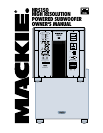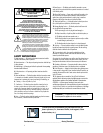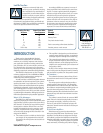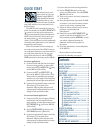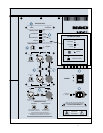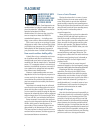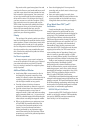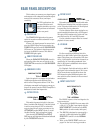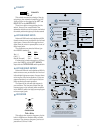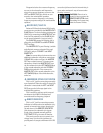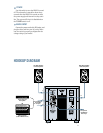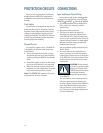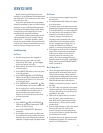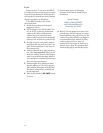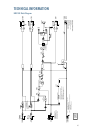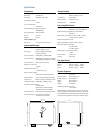
6
Corner or Center Placement
Placing the subwoofer in a corner (corner
loading) excites the most room modes in the
room, which tends to smooth the individual
peaks and dips caused by each standing wave.
Moving the subwoofer outward from the corner
along the wall results in fewer standing waves,
but may result in noticeable peaks at
certain frequencies.
Some people prefer to place the subwoofer
between the left and right main speakers, so
that all the sound is coming from the same
plane. Some prefer to use two subwoofers and
place one with the left speaker and the other
with the right speaker. The Master Out/Slave
In connections on the HRS150 allow you to do
this quite easily.
Another benefit of corner placement is in-
creased efficiency and lower distortion. The
energy that is reflected off the walls reinforces
the direct sound, putting less of a demand on
the power amplifier to reach higher sound
pressure levels.
It is important that the corner has good
structural strength, or the low-frequency energy
can cause rattling and other distracting vibrations.
Experiment with the orientation of the
subwoofer. The driver in the HRS150 faces
downward toward the floor while the passive
radiators face out the sides. It may be helpful
to play steady-state tones or pink noise while a
partner moves the subwoofer (perhaps on a
small wheeled cart), to make it easier to hear
the differences in the sound as the changes in
placement and orientation are made.
Principle of Reciprocity
One trick that has been used successfully to
find the best location for a subwoofer is placing
the subwoofer in your listening position. The
principle of reciprocity says that you can find
the best location for the subwoofer by switching
places between the listening position and the
subwoofer position. It is important that the cabi-
net be raised off the ground and at the same level
as your ears. If that’s not possible, at least put the
subwoofer in the same location as your listening
position to achieve a close approximation.
PLACEMENT
AN IMPORTANT NOTE
ON HRS150 BASS
RESPONSE AND YOUR
CONTROL ROOM OR
LISTENING ROOM
You’ve heard it before. “Low-frequencies are
non-directional, so it doesn’t matter where you
place the subwoofer.” Although it is true that fre-
quencies below about 100 Hz are
non-directional, it is also true that a lot of fac-
tors can conspire to thwart the HRS150’s
extended low frequency — including room
shape, room volume, and acoustical treatment.
This is not a cop-out or an apology. It’s plain
old physics in action. Here are some tips to help
you find the best placement for your HRS150
and optimize the low-frequency response in
your particular room. Consider the following:
Room acoustics and bass-handling ability
Nobody likes to buy a subwoofer and a new
set of speakers and then be told that they
should spend extra bucks on bass traps or a re-
modeling job. But the simple fact is, “standard”
rooms, i.e., rectangular rooms in conventional
business or residential structures, are rarely if
ever conducive to optimal low bass reproduc-
tion without some modifications.
However, understanding what can cause
degradation of the low-frequency response in
a room can help in choosing a location that
can minimize the problems associated with
poor bass response most notably interference
and resonance.
Interference is caused when the reflected
wave from the surrounding walls arrive out-of-
phase with the direct sound. This can weaken
or even cancel the sound. Keeping the distance
between the subwoofer driver and any adjacent
walls no longer than 1/8 of a wavelength (20 in.
or 51 cm at 80 Hz) can minimize interference.
Room resonance is caused by the reinforce-
ment of certain frequencies between 20 Hz and
200 Hz, which creates “standing waves” or
room modes. These resonant frequencies are
determined by the dimensions of the room.
The bass response is sharply boosted for a nar-
row band near resonance, and then appears to
be attenuated between resonances.



